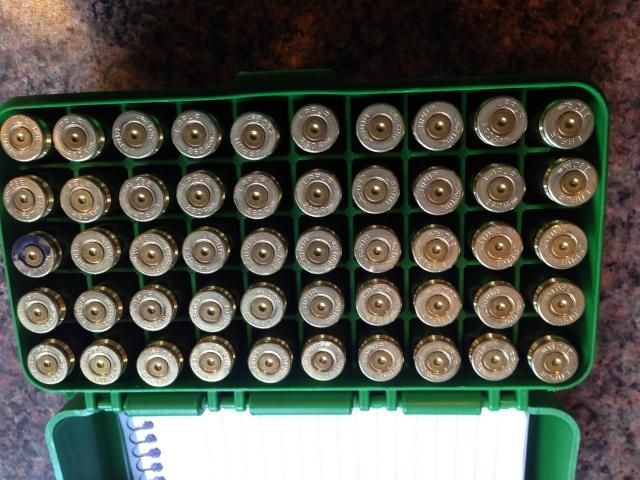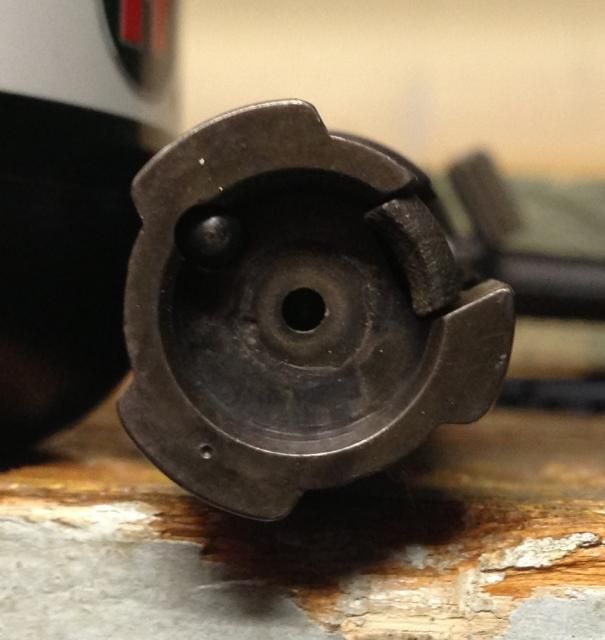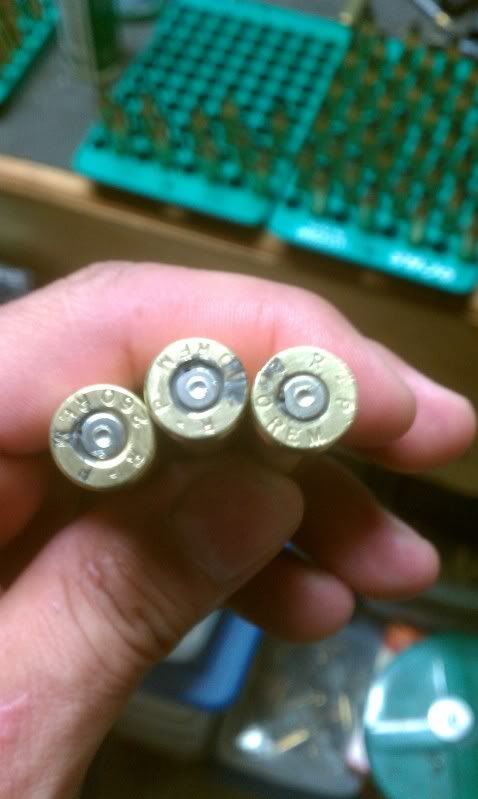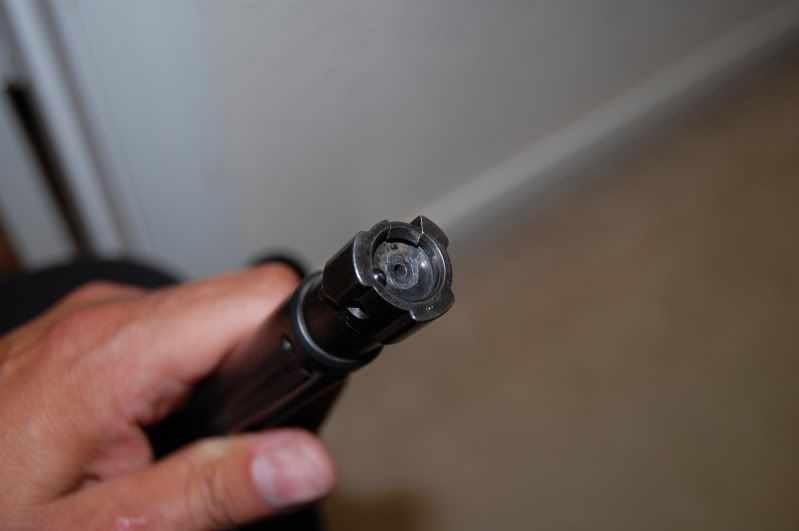I'll start with the picture, then give the longer explanation. I'll also say that I really don't think it was an issue of sloppy loading on my part, and I'm wondering if it was simply a bad primer, but more on that later:

So, here's the deal:
I took 50 rounds worth of my normal load for my AIAX 260 out to the range today, and round #47 performed as shown above. Prior to this shot I had no signs of pressure, and things were shooting just great. I was shooting at a 5.5" plate at 500 yards when this failure occurred, and this shot was a hit, along with the previous two shots (which makes me think it wasn't moving at any kind of substantially different velocity). The failure cut an etch into the bolt face of the rifle that is roughly the same shape as the area where the gas escaped.
I've used this particular load for about 250-300 rounds so far, and I'm pretty meticulous about my loading technique. I'm guessing that this may have been a bad primer issue, but I'm not certain I know how to avoid this kind of thing in the future. Moreover, I'm worried that this VERY expensive rifle is damaged… if it is merely cosmetic I can deal with it, but I'm definitely concerned about accuracy and function.
Any thoughts on why this happened? Is the damage to the bolt face merely cosmetic, or should I expect accuracy problems, etc?
Here's what I can tell you about the load that was being shot at the time of the failure (and again, only one shot out of these fifty had a problem):
1) Lapua brass… this was its 4th firing. It had been full-length sized, then trimmed to 2.025", and the primer pockets were cleaned with a hand held tool.
2) Winchester large rifle primers. This happened about 850 primers into a box of 1,000
3) Lapua 139gr Scenar bullet, seated to a depth that put the bullet 0.042" off of the lands.
4) 41.4 grains of H4350 powder. I've run hotter before in this gun without pressure signs, and this is below the published book max. These days my powder is almost always from a newer lot, as I buy cans as I can find them, often 1 pound at a time (the obvious powder supply issue). But, I had already fired probably 70 shots from this can, so it wasn't just freshly opened. I weigh each charge on an RCBS Chargemaster Combo, and double check the pan weight before putting it into the case. There's no chance I overcharged the case, unless the scale is simply not working correctly.
5) This load previously went over the chronograph at 2,704 fps, on a colder day when the rifle was new, at the same elevation, using a slightly deeper bullet seating depth.
6) Today was a 73 degree day at the range, at 5,800 feet elevation. I've previously fired this load, from this rifle, on a 92 degree day.
Any insight?
Here are a couple more pictures:

The rest of today's ammo (no obvious pressure signs, no extractor marks, nothing other than the one problem shot):

The bolt face (sorry, it was tough to photograph):


So, here's the deal:
I took 50 rounds worth of my normal load for my AIAX 260 out to the range today, and round #47 performed as shown above. Prior to this shot I had no signs of pressure, and things were shooting just great. I was shooting at a 5.5" plate at 500 yards when this failure occurred, and this shot was a hit, along with the previous two shots (which makes me think it wasn't moving at any kind of substantially different velocity). The failure cut an etch into the bolt face of the rifle that is roughly the same shape as the area where the gas escaped.
I've used this particular load for about 250-300 rounds so far, and I'm pretty meticulous about my loading technique. I'm guessing that this may have been a bad primer issue, but I'm not certain I know how to avoid this kind of thing in the future. Moreover, I'm worried that this VERY expensive rifle is damaged… if it is merely cosmetic I can deal with it, but I'm definitely concerned about accuracy and function.
Any thoughts on why this happened? Is the damage to the bolt face merely cosmetic, or should I expect accuracy problems, etc?
Here's what I can tell you about the load that was being shot at the time of the failure (and again, only one shot out of these fifty had a problem):
1) Lapua brass… this was its 4th firing. It had been full-length sized, then trimmed to 2.025", and the primer pockets were cleaned with a hand held tool.
2) Winchester large rifle primers. This happened about 850 primers into a box of 1,000
3) Lapua 139gr Scenar bullet, seated to a depth that put the bullet 0.042" off of the lands.
4) 41.4 grains of H4350 powder. I've run hotter before in this gun without pressure signs, and this is below the published book max. These days my powder is almost always from a newer lot, as I buy cans as I can find them, often 1 pound at a time (the obvious powder supply issue). But, I had already fired probably 70 shots from this can, so it wasn't just freshly opened. I weigh each charge on an RCBS Chargemaster Combo, and double check the pan weight before putting it into the case. There's no chance I overcharged the case, unless the scale is simply not working correctly.
5) This load previously went over the chronograph at 2,704 fps, on a colder day when the rifle was new, at the same elevation, using a slightly deeper bullet seating depth.
6) Today was a 73 degree day at the range, at 5,800 feet elevation. I've previously fired this load, from this rifle, on a 92 degree day.
Any insight?
Here are a couple more pictures:

The rest of today's ammo (no obvious pressure signs, no extractor marks, nothing other than the one problem shot):

The bolt face (sorry, it was tough to photograph):




